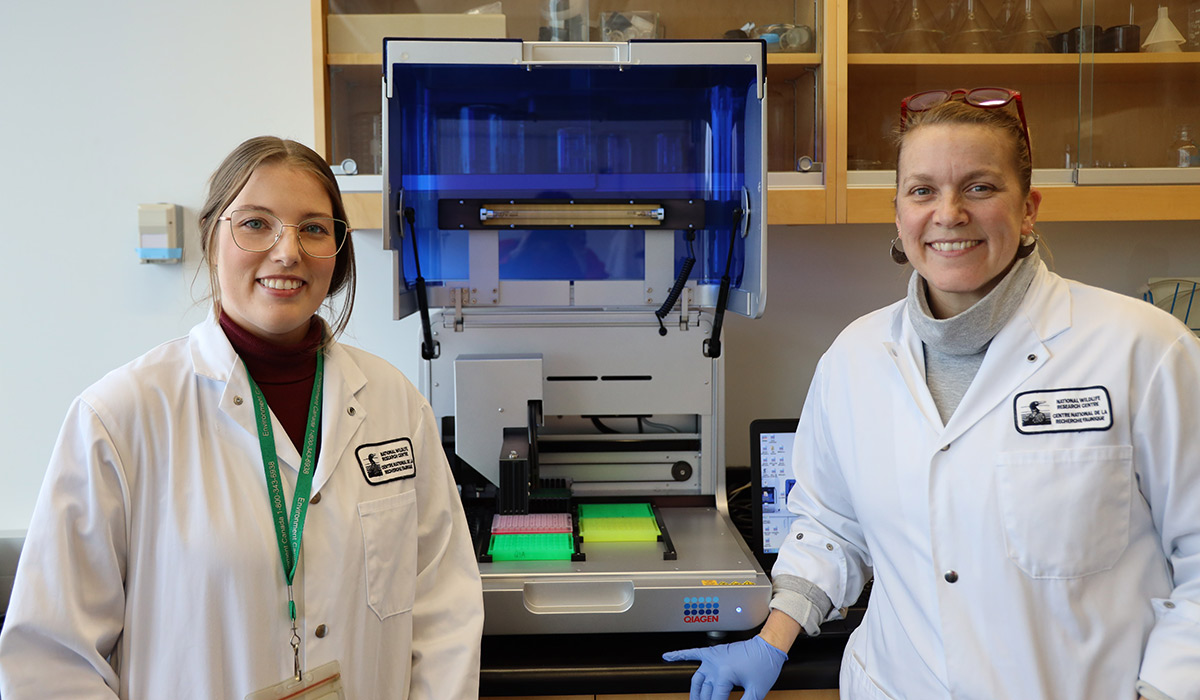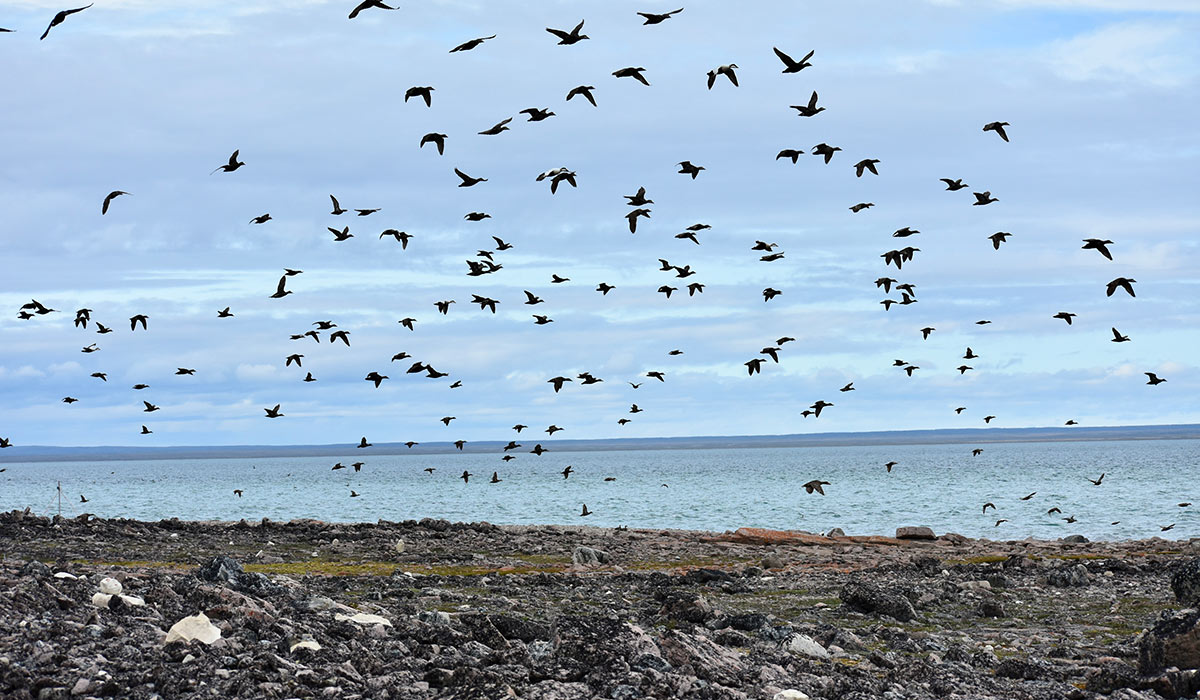As global temperatures rise and sea ice melts, shipping routes are opening in the Arctic. This increase in vessel traffic has introduced a serious risk to wildlife in the area – the potential of a devastating accidental oil spill.
Seabirds, such as the black guillemot and the thick-billed murre, are at particular risk during these incidents as compounds from the oil disrupt the delicate waterproofing of their feathers that protect them from the icy waters of their home. The birds’ attempts to clean themselves can then introduce contaminants into their digestive tracts, creating further risks to human health if these birds are harvested for food by local communities.
While environmental officers could measure the loss of animal life due to oiling in the aftermath of a spill, a gap existed in their ability to track the health outcomes for wildlife that managed to survive these catastrophic changes to their environment.

At Carleton University, scientists have bridged this gap by creating a new tool to monitor the impacts of oil spills on wildlife in this expansive polar region. Using genetic code to monitor the impacts of oil spills on surviving seabirds, former master’s student Yasmeen Zahaby developed a tool called a ToxChip which measures the health impacts of seabirds at a DNA level.
It’s Genetic: Mapping DNA to Measure Contaminant Impacts
“A lot of these birds seemed healthy on the outside, but we wanted to understand how oil spills, or any kind of contaminant, impact them on a sub-lethal level,” says Zahaby.
Contaminants can lead to a myriad of health problems in seabirds.
“Some genes are important for immune function, some are important for balancing calcium in the body or balancing hormones,” explains Zahaby.
“All of these biological pathways can be impacted by oil spills and contaminants.”
Genetic technology has evolved in leaps and bounds in recent years, such that mapping a seabird’s genome and subsequently tracking health impacts is now possible.
“There were people thinking about this problem for a long time, but they didn’t have the tools to do it,” says Jennifer Provencher, adjunct professor in Carleton’s Department of Biology, who supervised Zahaby’s work.
To detect the impact of contaminants on the seabirds, Zahaby first had to build their genetic profile, as limited information existed for some of these species.
“We don’t know as much about their genes, so I had to make an educated guess as to what their genetic sequence would be,” says Zahaby.
“I looked at species that have already been documented and found the regions of the gene that they shared.”
Once the genes of healthy animals were sequenced, Zahaby examined the samples of surviving seabirds that had been impacted by a 3,000-litre oil spill. Investigating the condition of the genes using the ToxChip and comparing it to contaminants found in liver samples illuminated the impacts of the spill on the seabirds.
“Things outside of the body, like contaminants, can change gene expression,” says Zahaby. “We can measure with the ToxChip if the gene is turned on or off – and by how much.”
In the aftermath of a spill, a surviving seabird’s genes responsible for processing contaminants may be upregulated – indicating that their ability to digest and metabolize contaminants is being impacted, which could lead to negative health outcomes for the animal.

Research Informs the Way Forward on Shipping Routes
The ToxChip technology holds promise not only as a tool for routine monitoring of the health of animal populations, but also for informing policy. In the case of Arctic seabirds, the data gathered can help governments make decisions that address and balance economic concerns and shipping demands with the health of local wildlife.
To develop the ToxChip, Carleton worked in partnership with the Nunatsiavut government. As seabirds are a food source for communities in the area, government staff collected samples during the harvest season that were later used by Zahaby to decode the animals’ genes.
Findings from her research were then shared with government officials, who held public meetings with community members to share the data.
“Once the ship passes through, most people think that there’s no impact, but our work is trying to think more broadly about what the impacts of vessel traffic could be,” says Provencher.
“What we’re hoping to do with tools like this is to provide – specifically in the Arctic – ongoing baseline information that we can examine as we ramp up shipping.
“We are actively using this data to talk to the people making shipping corridors and protected areas to minimize impacts from vessels on wildlife.”
